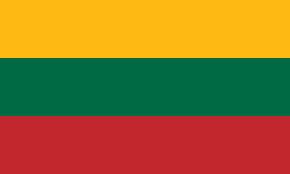Population (2017): 2.848 M
Income per Capita (2018): 16,793.25
Percentage of GDP on Healthcare (2015): 6.51%
training
Year family medicine established: 1992 (Jurgutis et al., 2018)
Type of Training: 40 hours of family medicine training is taught during undergraduate medical school.
Length of Training: There are 6 years of medical school, followed by 3 years of post-graduate training (Vilnius University, 2018)
Number of institutions that offer family medicine: All medical universities have a postgraduate program in family medicine
Number of family medicine residents graduating each year (2015): 2, 873 family medicine residents (Kringos et al., n.d.)
practice
Number of family doctors in country: 52.6 per 100,000
Physician to population ratio (2006): 76.6 family physicians per 100,000 people (Masseria et al., 2009).
DALY: 18,401 per 100,000 individuals (Due to all Causes).
Life Expectancy:
Females 2017: 84.4 years
Males 2017: 78.6 years
Mortality rate 2017:
Males: 213 per 1,000 male adults.
Females: 79 per 1,000 female adults.
Infant Immunization-HepB3: % of 1-year-old children received: 93%
College of Family Physicians (Y or N):
Yes: Lithuania College of Family Physicians.
Healthcare System
“The Lithuanian Society of General Practitioners and the College of General Practitioners are the two professional associations representing family doctors. The primary aims of these societies are to serve the patient and the GP by encouraging and maintaining the highest standards of general medical practice. Both GPs’ societies are recognized bodies for the accreditation of specialist training in general practice in Lithuania.” (Kringos et al., n.d.)
training
40 hours of family medicine training is taught during undergraduate medical school. Post graduate trainees spend 12 months in primary care settings. There are 6 years of medical school, (Vilnius University, 2018) followed by 3 years of post-graduate training. All medical universities have a postgraduate program in family medicine, first introduced at Vilnius University and Kaunas University of Medicine. As of 2015, 2, 873 family medicine residents graduate each year (Kringos et al., n.d.)
practice
As of 2006, 76.6 family physicians were available per 100,000 people (Masseria et al., 2009) Family physicians are responsible for diagnosis and ongoing management of medical conditions, with consultations accounting for about 50% of their workload.
Lithuania uses the gatekeeping method for specialized medical care (Jurgutis et al., 2018). GP’s in Lithuania use a patient list system and recent reforms have resulted in the delivery of Pediatrics and Gynaecology within primary healthcare.
References
Jurgutis, A., and Jukneviciute, V. “Primary Care in Lithuania” European Forum for Primary Care, Accessed December 1, 2018. http://www.euprimarycare.org/column/primary-care-lithuania
Kringos, D.S, Wienke G., Boerma, W., Hutchinson, A., Saltman, R.D., and Saltman, R.B. n.d. “Building Primary Care in a Changing Europe Edited Building Primary Care in a Changing Europe Observatory Studies Series 38.” Accessed December 2, 2018. http://www.euro.who.int/__data/assets/pdf_file/0018/271170/BuildingPrimaryCareChangingEurope.pdf.
Masseria, C., Irwin, R., Thomson, S., Gemmill, M., & Mossialos, E. 2009. “Primary Care in Europe.” The London School of Economics and Political Science, no. December: 1–42. https://doi.org/10.1097/JAC.0b013e31824b45f4.
“Medicine.” n.d. Accessed November 28, 2018. https://www.vu.lt/en/studies/undergraduate-studies/56-studies/studies/2770-medicine



